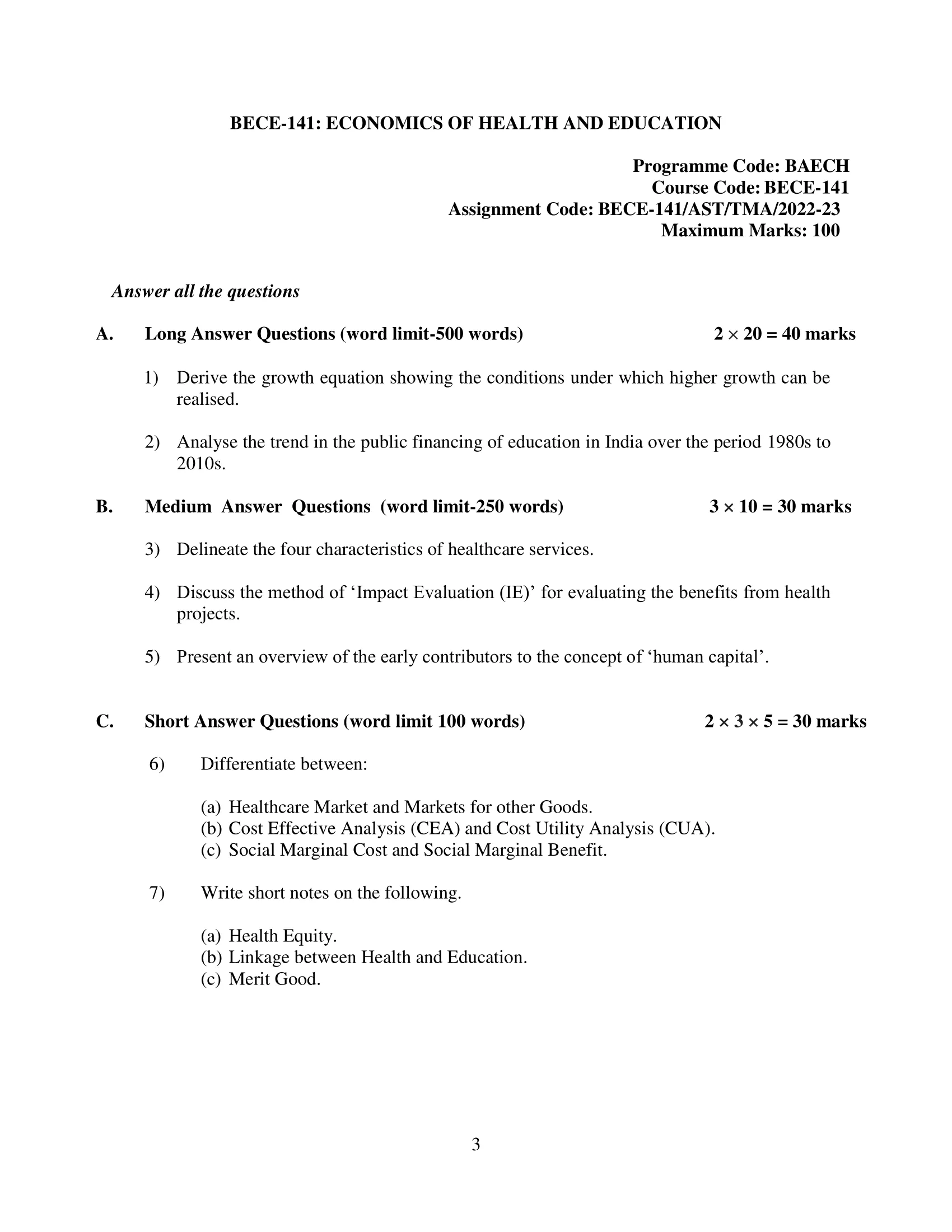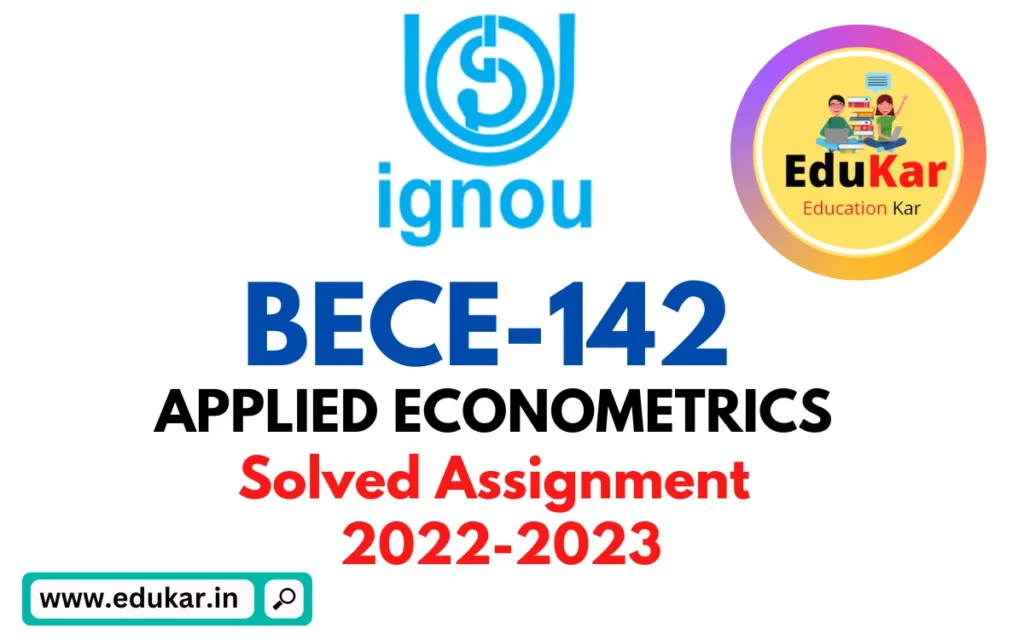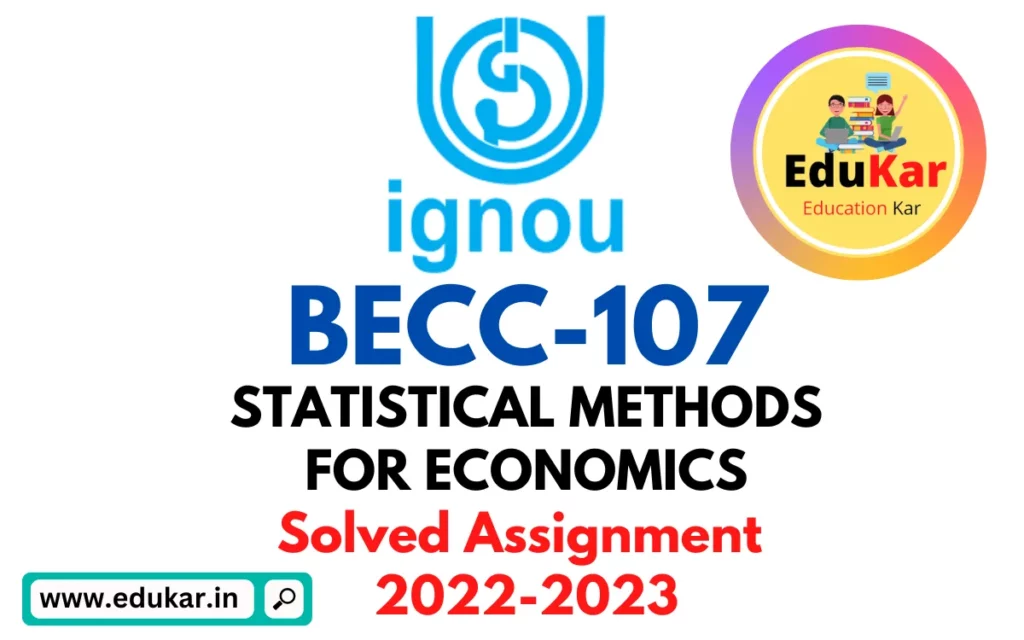Contents
- 1 A. Long Answer Questions (word limit-500 words) 2 × 20 = 40 marks
- 2 1) Derive the growth equation showing the conditions under which higher growth can berealised.
- 3 2) Analyse the trend in the public financing of education in India over the period 1980s to 2010s.
- 4 B. Medium Answer Questions (word limit-250 words) 3 × 10 = 30 marks
- 5 3) Delineate the four characteristics of healthcare services.
- 6 4) Discuss the method of ‘Impact Evaluation (IE)’ for evaluating the benefits from health projects.
- 7 5) Present an overview of the early contributors to the concept of ‘human capital’.
- 8 C. Short Answer Questions (word limit 100 words) 2 × 3 × 5 = 30 marks
- 9 6) Differentiate between:
- 10 (a) Healthcare Market and Markets for other Goods.
- 11 (b) Cost Effective Analysis (CEA) and Cost Utility Analysis (CUA).
- 12 (c) Social Marginal Cost and Social Marginal Benefit.
- 13 7) Write short notes on the following.
- 14 (a) Health Equity.
- 15 (b) Linkage between Health and Education.
- 16 (c) Merit Good.

| Title | BECE-141: IGNOU BAG Solved Assignment 2022-2023 |
| University | IGNOU |
| Degree | Bachelor Degree Programme |
| Course Code | BECE-141 |
| Course Name | ECONOMICS OF HEALTH AND EDUCATION |
| Programme Name | Bachelor of Arts (General) |
| Programme Code | BAG |
| Total Marks | 100 |
| Year | 2022-2023 |
| Language | English |
| Assignment Code | BECE-141/AST/TMA/2022-23 |
| Last Date for Submission of Assignment: | For June Examination: 31st April For December Examination: 30th September |

A. Long Answer Questions (word limit-500 words) 2 × 20 = 40 marks
1) Derive the growth equation showing the conditions under which higher growth can berealised.
Ans: The growth equation is a mathematical representation of the growth of a particular quantity over time. The equation can be used to determine the conditions under which higher growth can be realized.
The general form of the growth equation is given by:
G = rN
where G is the growth rate, r is the rate of increase or growth factor, and N is the initial number of units.
In order to realize higher growth, two key factors need to be considered: the rate of increase and the initial number of units. The rate of increase can be increased by implementing measures that increase the efficiency and productivity of the system. This can be achieved through investment in technology, improving management practices, and increasing access to capital.
The initial number of units can also be increased by implementing measures that increase the size of the system. This can be achieved through expanding the market reach, increasing access to resources, and attracting new customers.
It is important to note that the growth equation is not a guarantee of higher growth, but rather a representation of the conditions under which higher growth can be realized. The actual growth realized will depend on a number of factors including the state of the economy, competition, and external factors such as changes in regulations or geopolitical events.
To summarize, the growth equation is a useful tool for understanding the conditions under which higher growth can be realized. By increasing the rate of increase and the initial number of units, higher growth can be achieved. However, actual growth will depend on a number of factors that are outside of our control.
2) Analyse the trend in the public financing of education in India over the period 1980s to 2010s.
Ans: The trend in public financing of education in India over the past several decades has been one of increased investment, but with significant regional disparities.
In the 1980s, education was considered a low priority for government spending in India. As a result, investment in education was limited and the majority of funding for schools came from households and private sources. However, this began to change in the 1990s with the adoption of economic reforms and the increasing recognition of the importance of education for economic growth and poverty reduction.
In the 2000s, the Indian government increased its investment in education, particularly in primary and secondary schools. The Right to Education Act, which was passed in 2009, guaranteed free and compulsory education to all children between the ages of 6 and 14. This law has been a major driver of increased investment in education, as the government has worked to build new schools and improve existing ones to meet the demands of this policy.
Despite these efforts, there are still significant disparities in the public financing of education across India. Some states, such as Kerala and Tamil Nadu, have consistently high levels of investment in education, while others, such as Bihar and Uttar Pradesh, have struggled to keep pace. This has resulted in disparities in educational outcomes, with children in better-funded states receiving a higher quality education and being better prepared for the workforce.
One of the challenges facing public financing of education in India is the high dropout rate, particularly among children from disadvantaged backgrounds. Despite efforts to increase access to education, many children still leave school before completing their education, often due to poverty and other socio-economic factors. This not only limits the benefits of increased investment in education, but also perpetuates the cycle of poverty and inequality.
Another challenge is the quality of education in government schools, which is often subpar compared to private schools. The government has attempted to address this issue by increasing investment in teacher training and curriculum development, but progress has been slow. This has led many families to choose private schools, despite the higher costs, in order to ensure a better education for their children.
Despite these challenges, the trend in public financing of education in India over the past several decades has been positive. Increased investment in education has led to significant improvements in access to education and has laid the foundation for future growth and development. However, much work remains to be done to address the disparities in investment and outcomes across the country and to ensure that every child has access to a quality education.
B. Medium Answer Questions (word limit-250 words) 3 × 10 = 30 marks
3) Delineate the four characteristics of healthcare services.
Ans: Healthcare services can be defined as the provision of medical, nursing, or therapeutic care to individuals who require treatment for illnesses, injuries, or disabilities. There are four main characteristics of healthcare services that set them apart from other types of services and that define the unique nature of the healthcare industry. These characteristics are:
- Complexity: Healthcare services are highly complex, involving a wide range of knowledge, skills, and technologies, as well as a vast array of professionals, such as doctors, nurses, pharmacists, and other healthcare providers.
- Intangibility: Healthcare services are intangible, meaning that they cannot be physically seen or touched. Patients rely on the expertise and knowledge of healthcare professionals to diagnose and treat their illnesses, and they must trust that they will receive quality care.
- Inseparability: Healthcare services are inseparable from the provider delivering them. Patients receive care directly from healthcare professionals, and there is a close relationship between the provider and the patient that is essential to the provision of quality care.
- Heterogeneity: Healthcare services are heterogeneous, meaning that they are not standardized and can vary greatly from one provider to another. Patients may receive different treatments for the same illness depending on the expertise and judgment of the healthcare provider.
4) Discuss the method of ‘Impact Evaluation (IE)’ for evaluating the benefits from health projects.
Ans: Impact Evaluation (IE) is a method used to assess the benefits of health projects. The goal of impact evaluation is to determine the impact of an intervention on the health outcomes of individuals or populations and to assess whether the benefits of the project are commensurate with its costs.
Impact evaluations are typically conducted using either experimental or quasi-experimental designs. In experimental designs, participants are randomly assigned to either an intervention group or a control group. The impact of the intervention is then evaluated by comparing health outcomes between the two groups. In quasi-experimental designs, the intervention and control groups are not randomly assigned, but the impact of the intervention is still assessed by comparing health outcomes between the two groups.
One of the key benefits of impact evaluation is that it provides causal evidence on the effectiveness of health interventions. This is particularly important for health projects, as it helps to determine whether the benefits of the project are due to the intervention itself or to other factors.
Another benefit of impact evaluation is that it allows for the assessment of the cost-effectiveness of health interventions. By comparing the costs of the intervention with the health outcomes achieved, it is possible to determine the cost-effectiveness of the project and to identify areas where the intervention could be improved.
5) Present an overview of the early contributors to the concept of ‘human capital’.
Ans: The concept of “human capital” refers to the knowledge, skills, and abilities of individuals that can be used to generate economic value. The early contributors to this concept are considered to be some of the pioneers in the field of labor economics.
One of the earliest contributors to the concept of human capital was the economist Gary Becker, who first introduced the idea in the 1960s. Becker argued that human capital was an investment in an individual’s abilities and that, just like any other investment, it had the potential to generate a return. He saw education, training, and work experience as investments in human capital that could increase an individual’s earnings and economic productivity over their lifetime.
Another early contributor to the concept of human capital was the economist Theodore Schultz, who introduced the idea of “investment in human beings”. Schultz argued that investments in human capital, such as education and training, were crucial for economic development and that governments should encourage and support such investments.
Finally, the economist Jacob Mincer was another early contributor to the concept of human capital. Mincer is best known for his work on the economics of education and the return to education. He showed that investments in education and training led to higher earnings and that the rate of return on these investments was higher for individuals with more years of education.
C. Short Answer Questions (word limit 100 words) 2 × 3 × 5 = 30 marks
6) Differentiate between:
(a) Healthcare Market and Markets for other Goods.
Ans: Healthcare markets differ from markets for other goods in several important ways. Healthcare is a unique and complex market, characterized by high levels of uncertainty, technical complexity, and ethical considerations. Unlike markets for other goods, consumers in the healthcare market often have limited information and bargaining power, and they may face significant financial and practical constraints in accessing care. In addition, the healthcare market is heavily regulated, with governments and insurance companies playing a large role in determining prices and access to care. Finally, healthcare markets are often characterized by high levels of inefficiency, due to high levels of waste, duplication, and lack of coordination. These factors make healthcare markets distinct from markets for other goods and present unique challenges for policymakers, providers, and consumers.
(b) Cost Effective Analysis (CEA) and Cost Utility Analysis (CUA).
Ans: Cost Effective Analysis (CEA) and Cost Utility Analysis (CUA) are both methods used to evaluate the cost-effectiveness of healthcare interventions. However, there are some key differences between the two approaches.
CEA compares the costs of different interventions and determines which is the most cost-effective in terms of health outcomes achieved per dollar spent. It is a form of economic evaluation that considers only the costs and health outcomes of an intervention, without taking into account the quality of life of the patients.
CUA, on the other hand, takes into account not only the costs and health outcomes, but also the quality of life of the patients. CUA calculates the cost per quality-adjusted life year (QALY) gained, which is a measure of both the length and quality of life gained as a result of an intervention. This method provides a more comprehensive assessment of the value of an intervention in terms of both costs and benefits.
(c) Social Marginal Cost and Social Marginal Benefit.
Ans: Social marginal cost and social marginal benefit are key concepts in economics used to evaluate the impact of public policies and private decisions.
Social marginal cost (SMC) refers to the additional cost incurred by society as a whole as a result of the production or consumption of an additional unit of a good or service. It includes not only private costs, such as the cost of producing the good or service, but also any external costs, such as the cost of pollution or congestion, which are imposed on society as a whole.
Social marginal benefit (SMB) refers to the additional benefit received by society as a whole as a result of the production or consumption of an additional unit of a good or service. It includes not only private benefits, such as the enjoyment of the good or service, but also any external benefits, such as the reduction of pollution or increased safety, which are received by society as a whole.
7) Write short notes on the following.
(a) Health Equity.
Ans: Health equity refers to the idea that everyone should have an equal opportunity to attain good health, regardless of their socio-economic status, race, ethnicity, or other factors. It involves ensuring that the distribution of health outcomes is not influenced by social or economic factors and that everyone has access to quality healthcare and healthy living conditions. Health equity is a critical component of a fair and just society, and it is an essential goal for policymakers, healthcare providers, and public health advocates. Addressing health equity requires a systemic approach that addresses the underlying social determinants of health and ensures that health outcomes are equitable for all populations.
(b) Linkage between Health and Education.
Ans: The linkage between health and education refers to the close relationship between health and educational outcomes and the impact that one can have on the other. Good health can have a positive impact on educational attainment and success, while a lack of access to quality healthcare can lead to poor health and negatively impact educational outcomes. On the other hand, education can positively impact health by providing individuals with the knowledge and skills necessary to make informed decisions about their health and access to healthcare. This can also lead to better job opportunities and higher incomes, which can positively impact health outcomes. In addition, education about health and disease prevention can contribute to better overall health for individuals and communities. Overall, the linkage between health and education highlights the importance of addressing both health and educational needs in order to improve the well-being of individuals and communities.
(c) Merit Good.
Ans: A merit good is a type of good or service that is considered to be socially desirable and essential for individuals and communities, regardless of whether or not the individuals themselves desire it. Merit goods are typically seen as having positive externalities, meaning that the benefits of the good or service are not limited to the individual who consumes it, but also extend to society as a whole. Examples of merit goods include education, healthcare, and public transportation.
The idea of merit goods is rooted in the concept of the welfare state, where the government has a responsibility to ensure that essential goods and services are available to all citizens, regardless of their ability to pay. The provision of merit goods is often seen as a way to address inequalities in society and promote the general welfare.
How to Download BECE-141 Solved Assignment?
You can download it from the www.edukar.in, they have a big database for all the IGNOU solved assignments.
Is the BECE-141 Solved Assignment Free?
Yes this is absolutely free to download the solved assignment from www.edukar.in
What is the last submission date for BECE-141 Assignment?
For June Examination: 31st April, For December Examination: 30th October













![[Solved Assignment] BPCS 188-APPLICATIONS OF SOCIAL PSYCHOLOGY (IGNOU-BAG) 2022-2023 BPCS 188-APPLICATIONS OF SOCIAL PSYCHOLOGY IGNOU BAG Solved Assignment 2022-2023](https://edukar.org/wp-content/uploads/2023/01/BPCS-188-APPLICATIONS-OF-SOCIAL-PSYCHOLOGY-IGNOU-BAG-Solved-Assignment-2022-2023-1024x640.webp)

